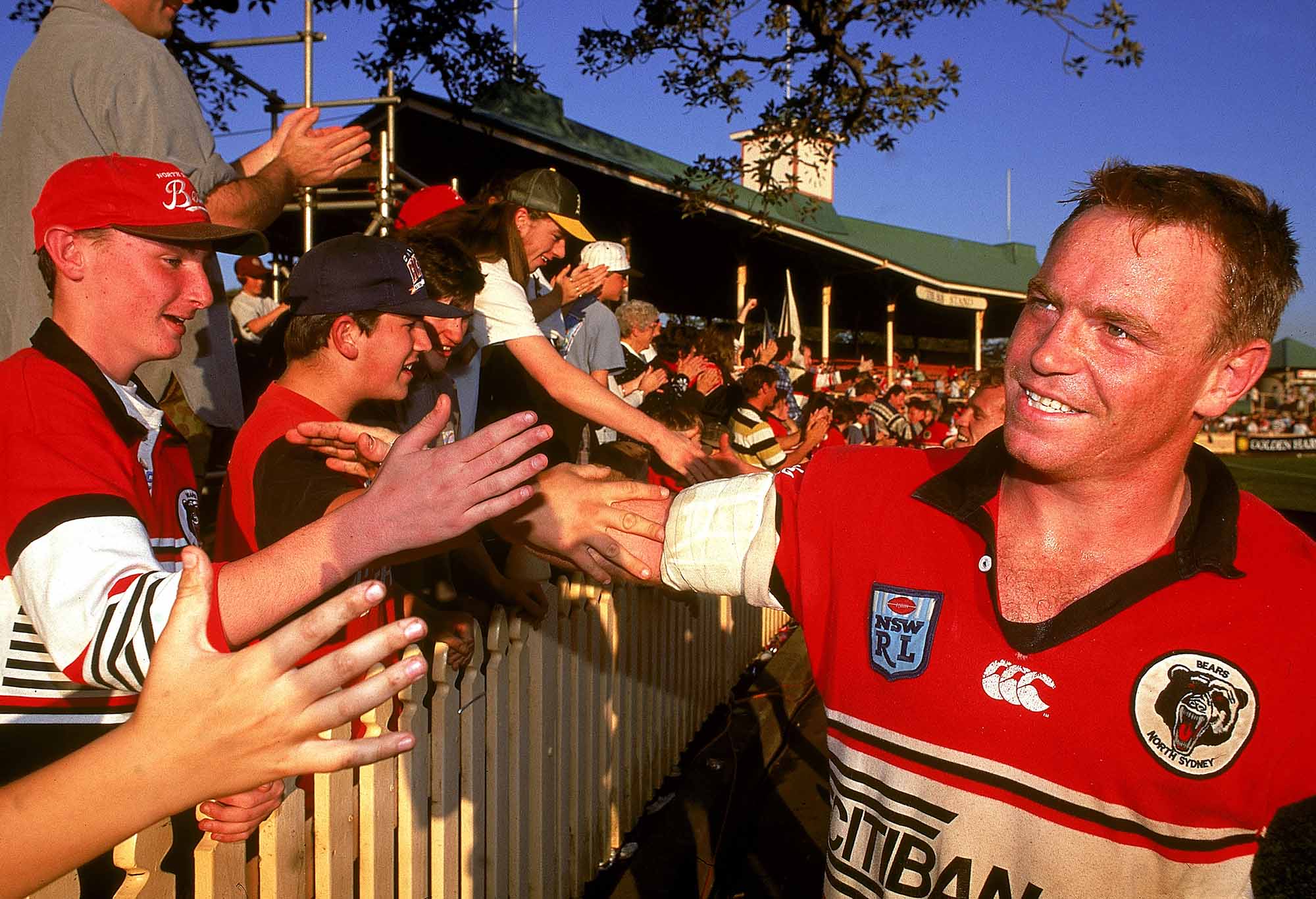‘Transitioning into new territories while still honouring tradition’: Why Bears are the best pathway to the NRL for Perth

June 26 marks a critical juncture for Perth’s bid to secure the NRL’s 18th license.
Tasked by the ARLC and the Perth stakeholders, Nick Politis is attempting to craft a sustainable model that minimizes risk while maximizing revenue for stakeholders.
The prospect of a Perth team promises significant benefits: tapping into a new fan base, attracting sponsors, media rights, and betting revenue.
Moreover, the introduction of a new time zone enhances scheduling flexibility, bolstering negotiations for broadcasting rights.
Potential challenges loom, such as increased travel costs and time for teams travelling west and a Perth team heading east.
The competitive landscape is daunting, with established codes like the AFL poised to defend their market share aggressively.
Melbourne Storm, Gold Coast Titans, Gold Coast Suns and GWS Giants faced similar challenges, despite robust support.
All are struggling to increase their traction in hostile territory.
Perth desires a standalone team, but risks dictate a different strategy. The Bears, with their 116-year legacy and national recognition, offer a compelling narrative.
Their enduring brand loyalty spans North Sydney to the Central Coast and has strong recognition in Queensland and New Zealand due to player linkages in the 80s and 90s.
Unlike new entrants GWS or Suns, the Bears bring instant credibility and a dedicated fan base. Recently admitted brands in two codes indicate how a historic brand with a gritty ‘soul’ instantly garners acceptance and support.
Port Adelaide in AFL and Redcliffe Dolphins show that recognised heritage brands are priceless when seeking rapid fan attachment.
The options therefore would be Bears or Jets – and metrics favour the Bears.
Greg Florimo and North Sydney Bears fans at North Sydney Oval. (Photo by Getty Images)
The Bears’ manner of exit has created a tenacity and determination to return unseen in the Australian sporting landscape.
They are similarly placed as Redcliffe or Port Adelaide were the most prepared of the teams in second-tier football.
Crucially, the Bears have diligently expanded their grassroots network in recent years, adding junior clubs and focusing on proven elite pathways to the NRL for junior talent – Harold Matts and SG Ball.
This strategic foresight and their relentless enthusiasm for readmission have boosted ARLC confidence.
Remaining negotiations over franchise headquarters, license ownership, and any Sydney home games can surely be concluded to mutual satisfaction in the coming weeks.
It’s the ARLC who will endorse a model they feel will add the most revenue for stakeholders and be as risk-averse as possible.
It’s in both party’s interest to engage in a collaborative, humble and respectful manner.
The Bears have dropped many conditions and may have to do more, as might Perth. The end result needs to be a proudly Western Australian team that is equally proud and respectful of its brand, colours and historic ties.
The Bears need to see this as a Perth team, not a North Sydney team. Clubs with dual bases, like Brisbane Lions and Sydney Swans, exemplify successful transitions into new territories while honouring tradition.
The Bears embody resilience and history, traits that resonate with fans and sponsors alike – linking the two opens up national corporations as potential sponsors.
Collaboration with experienced consultants and former club executives who oversaw the successful integration of the Lions and Swans into new locations would ensure an instantly viable, low-risk entry into the NRL landscape.
The Swans are the most-watched team on TV in Australia and it’s a model and outcome the ARLC would dearly love to emulate.
The endorsement from broadcasters like Foxtel and Nine for a Perth Bears underscores the potential economic windfall.
Sydney clubs stand to benefit from increased attendance, while the Bears’ expansive fan base promises robust TV viewership and corporate sponsorship.
Billy Moore and Jason Taylor wth the Bears in 1998. (Photo by Getty Images)
Many league fans will adopt the Bears as a second team or at least have enough interest to watch their matches on TV. The brand has a cache.
Merchandise sales and memberships for a Perth Bears team will be significantly higher than any other model and NSW away match attendances will be a windfall for local clubs.
Over 200,000 dormant Bears fans from a huge unrepresented region of northern Sydney and across many parts of Australia and New Zealand await, their enthusiasm palpable online.
Bears jerseys are coming out of mothballs and are reappearing across Sydney – the slogan ‘Wear the Bear’ has become a catchcry.
Ultimately, a Bears’ integration into Perth promises a symbiotic relationship.
By leveraging their heritage and network, they not only mitigate risks associated with a new market but also unlock untapped revenue streams for all stakeholders.
Sports opinion delivered daily
Manly and the Roosters stand to gain significantly from this strategic alliance due to their proximity to a massive re-engaged zone, with spillover adding talented players and increased interest in League to their playing rosters and member base also, as well as home game attendances.
A marketing dream for the NRL is within touching distance, which will allow them to turn with confidence towards the challenges of a PNG entry.
